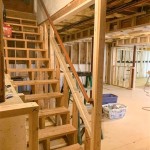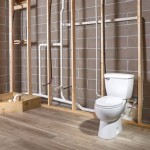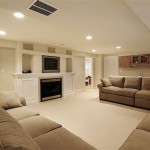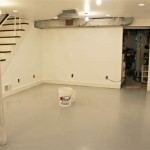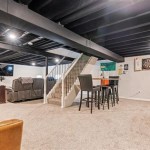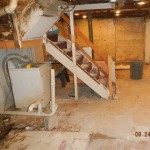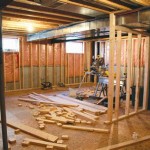Essential Aspects of Acceptable Moisture Levels in Basement Walls
Moisture intrusion in basement walls can adversely affect the structural integrity of a building, as well as the health and comfort of its occupants. Understanding acceptable moisture levels in basement walls is crucial to prevent costly damage and ensure a habitable environment.
### Why is Moisture Control in Basement Walls Important?Excessive moisture in basement walls can lead to a host of problems, including:
- Structural damage due to corrosion, cracking, and weakening of the walls
- Mold and mildew growth, which can cause respiratory problems and allergic reactions
- Rot and decay of building materials, such as wood framing and insulation
- Unpleasant odors and musty air
Moisture can enter basement walls through various sources, such as:
- Water seepage through cracks or holes in the wall
- Condensation due to temperature differences between the basement and outside air
- Rising damp from groundwater
- Flooding or leaks from plumbing systems
To maintain a healthy and structurally sound basement, acceptable moisture levels in basement walls must be regulated:
- Relative Humidity (RH): Ideal RH levels for basement walls should be below 60%. Higher levels can encourage mold and mildew growth.
- Water Content: The amount of moisture present in the wall should be less than 15% by weight. Higher moisture content indicates potential for moisture damage.
Moisture levels in basement walls can be measured using various methods:
- Moisture Meters: Electronic devices that measure the electrical conductivity of the wall, which is influenced by moisture content.
- Relative Humidity Sensors: Instruments that measure the amount of moisture in the air.
- Visual Inspection: Checking for signs of moisture, such as dampness, efflorescence (white or crystalline deposits), or mold growth.
To control moisture levels in basement walls, several measures can be implemented:
- Improve Drainage: Install gutters and downspouts to divert water away from the foundation. Consider sloping the ground around the building to prevent water from pooling.
- Seal Cracks and Holes: Repair any cracks or holes in the walls with caulk, sealants, or waterproof coatings.
- Install a Vapor Barrier: A plastic or polyethylene barrier installed on the interior or exterior of the wall prevents moisture from entering the basement.
- Use Dehumidifiers: Place dehumidifiers in the basement to remove excess moisture from the air.
- Ventilate the Basement: Ensure adequate ventilation by opening windows or installing ventilation fans to reduce condensation and prevent moisture buildup.
Controlling moisture levels in basement walls is essential for maintaining a healthy and structurally sound building. By understanding acceptable moisture levels and implementing effective control measures, you can prevent moisture damage, improve indoor air quality, and safeguard the integrity of your basement.

5 Signs Your Basement Has Excess Moisture Zephyr Thomas

The Top 7 Moisture Meters For Drywall Concrete And Wood Mold Help You

Wme Wood Moisture Equivalent Home Inspector S Guide Chart

Classification Of The Moisture Content And Salinity Brick Walls Download Scientific Diagram

Dehumidifier Setting Chart What Should Be Set At

Basements Bra Weathertight

Summer Basement Concerns And Moisture Control Measures Na Foundation Service

How To Use A Moisture Meter On Drywall Wood 6 Step Guide Home Inspector Secrets

Basements Bra Weathertight

Understanding Moisture Content And Wood Movement Thisiscarpentry
See Also

